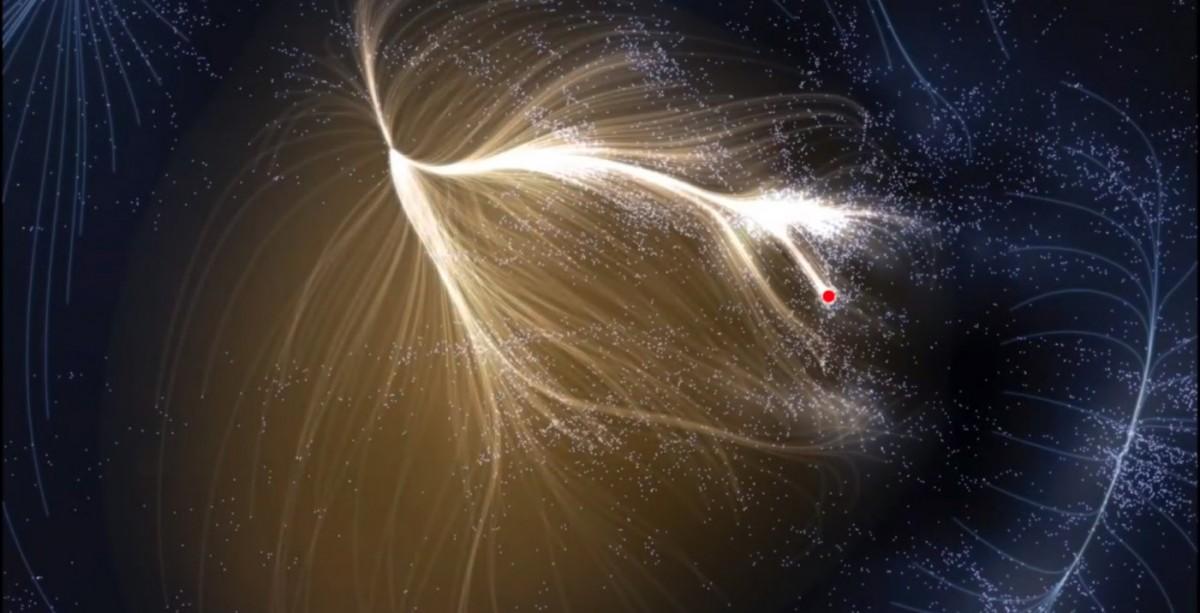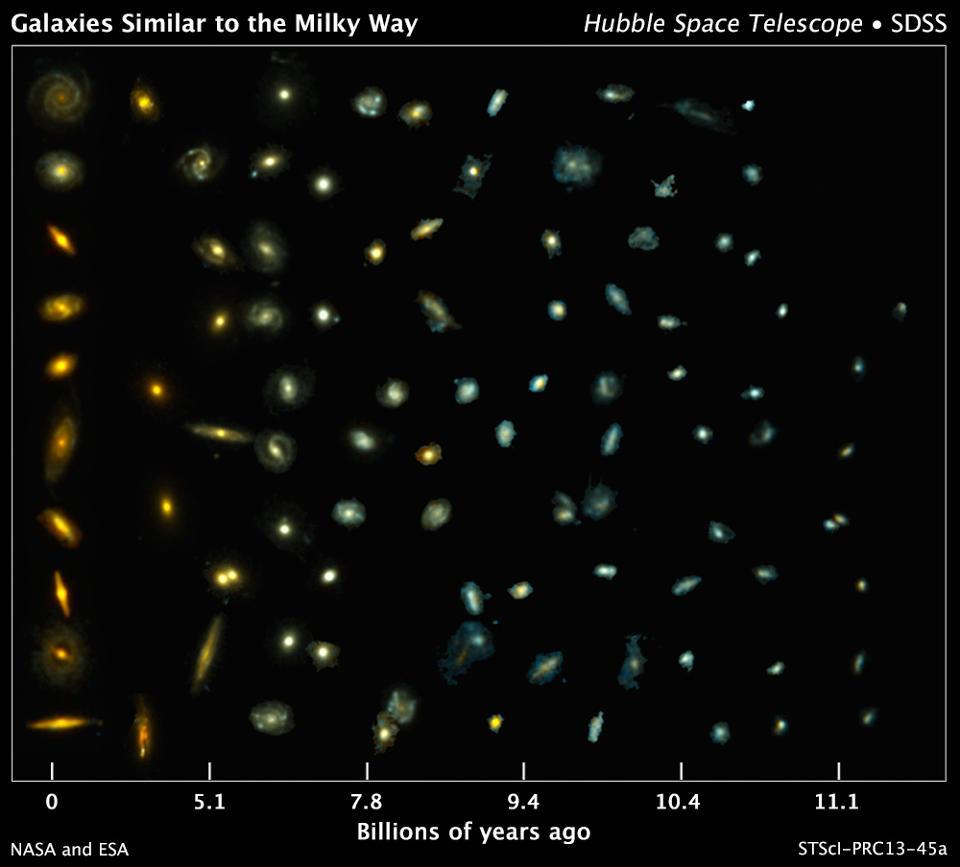Ask Ethan: Does the universe have a center?

The universe looks about the same in all directions, but distant galaxies look younger and younger and less evolved than those that are closer.
We know that our Universe began with the Big Bang, but this does not mean that we all correctly imagine it. Most people imagine it as an explosion: when it all began with a hot and dense state, and then expanded to the sides and cooled down, while the various fragments, fragments were removed from each other. But, whatever this picture is destructive, it is incorrect. Is our reader asking a related question?
It is interesting how it turns out that the universe does not have a center and the CMB is distant in any direction to an equal distance from us. It seems to me that if the universe expands, then you can always find a place from where it began to expand.
Let's first think about the physics of the explosion, and what our Universe would be like if it started with an explosion.

The first stages of an explosion during a nuclear test of Trinity , 16 milliseconds after detonation. The upper part of the explosion reached 200 m.
The explosion starts at a certain point and quickly expands in all directions. The fastest moving debris moves out faster than the rest. The farther you are from the center of the explosion, the less material will reach you. The energy density decreases over time with time, but farther from the center of the explosion, it decreases faster because the material is more diffuse at the edges of the explosion. It doesn't matter where you are - if the explosion didn't destroy you, you can always reconstruct the center of the explosion.

The large-scale structure of the Universe changes with time, small imperfections grow and form the first stars and galaxies, then merge together to form large, modern galaxies visible to us today. Looking at long distances, we see a younger Universe, such as our local region was in the past.
But we see not such a universe. It looks the same at far and near distances: the same density, the same energy, the same number of galaxies. Remote objects moving from us with greater speed, do not look similar in age to those that are closer to us and move slower; they look younger. At long distances, objects are not getting smaller, they are getting bigger. And if you look at the pattern of movement in the Universe, we will see that despite the fact that we can look at tens of billions of light years, the center always appears next to us.

The supercluster of Laniakey , the location of the Milky Way in which is shown in red, is just one billionth of the volume of the observed Universe. If the universe began as a result of an explosion, the Milky Way should have been near the center
Does this mean that we, from the trillions of galaxies of the Universe, happened to be in the center of the Big Bang? And that the initial explosion was adjusted in this way, and irregular, inhomogeneous densities, energies, and the mysterious glow of 2.7 K were taken into account? How petty the Universe would be if it were arranged in such an unrealistic way from the very beginning.

An explosion in space would force the outer layers of material to move outwardly faster than the others, which means that they would become less dense, lose energy faster than others, and show different properties as they move away from the center. Also, the explosion would have to expand somewhere, and not stretch the space itself. Our universe does not correspond to this description.
Instead, the General Theory of Relativity predicts not an explosion, but an expansion. The universe, which began with a hot, dense state, which is expanding its very fabric. There is a misconception that this process started from a single point - this is not so! There was a region of the cosmos with such properties, filled with matter, energy, etc., and then the Universe began its evolution under the influence of the laws of gravity.
She has similar properties everywhere, including density, temperature, number of galaxies, etc. If we look out, we will find evidence of an evolving universe. Since the Big Bang happened everywhere at the same time a final time ago on the whole part of space, and we can only see this part, when we look from our point of observation, we see a part of space that is not very different from our location in the past.

Looking at cosmic distances means looking into the past. We live 13.8 billion years after the Big Bang, but the Big Bang happened in all the other places available for observation. The time of propagation of light to other galaxies means that we see these distant regions as they were in the past.
Galaxies, whose light took a billion years to reach us, look as they were a billion ice back! 13.8 billion years ago, radiation rather than matter prevailed in the Universe, and when neutral atoms first formed in the Universe, this radiation remained, and then cooled and experienced a red shift due to the expansion of the Universe. What we are seeing as relic radiation is not only the residual luminescence from the Big Bang, but this radiation can be seen from any place in the Universe.

Only a few hundred microkelvins — a few parts in 100,000 — separate the hottest areas from the coldest in the background radiation pattern.
The universe does not necessarily have a center; what we call the “site” of the space in which the Big Bang took place may be of infinite size. If there is a center, it can literally be everywhere, and we would not know about it; parts of the universe we observe are not enough to find out. We would need to see the edge, the fundamental anisotropy (where different directions differ from each other) in temperature and number of galaxies, and our Universe, on the largest scales, actually looks the same everywhere and in all directions.

Logarithmic image of the observable universe in the artist's view
There is no place from which the Universe began to expand due to the Big Bang; there is a time from which the universe began to expand. This is exactly the Big Bang - a condition that affects the entire observable Universe at a certain moment. Therefore, to look at long distances in all directions means to look into the past. Therefore, all directions have approximately the same properties. And so our history of cosmic evolution can be traced back, as far as our observations can peek.

Milky Way galaxies and their past
Perhaps the universe has a finite size and shape, but if so, this information is not available to us. The part accessible to us for observations of the Universe is finite, and that information inside this part is not contained. If you represent the Universe in the form of a ball, a loaf or another analogy you like, remember that you only have access to a tiny part of the present Universe. What we are seeing is the lower limit of what is there. It can be finite, it can be infinite, we are only sure that it expands, its density decreases, and the further we look, the deeper into the past we can look. As astrophysicist Katy Mack said:
The universe expands as your consciousness expands. It does not expand somewhere; you simply become less dense [ eng.] - “dense”, and also “stupid” / approx. trans. ]
Ethan Siegel - astrophysicist, popularizer of science, blog Starts With A Bang! He wrote the books Beyond The Galaxy , and Treknologiya: Star Trek Science [ Treknology ].
All Articles